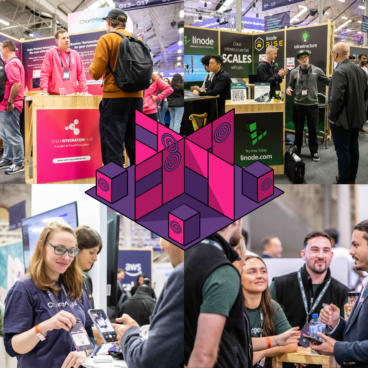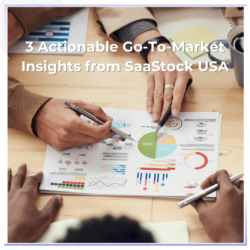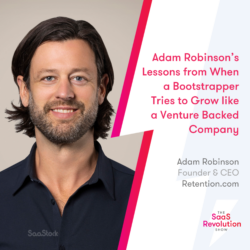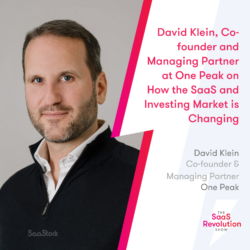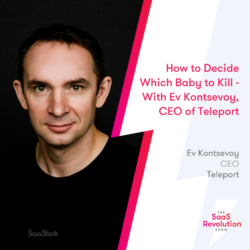B2B SaaS marketing is notoriously difficult and there’s more to contend with now than ever.
An impactful marketing strategy in 2025 needs to consider how you’ll stand out in an increasingly crowded market, new ways to feed your sales pipeline amongst changing buyer preferences, and cut through the noise and reach the right audiences in the AI era.
Through turbulent markets and changing demands, in person events have remained an important marketing channel that helps B2B SaaS businesses of all stages reach their goals faster.
In this post, we’ll explore why events continue to drive results for go-to-market teams and how they’ll help you make an impact in 2025.
What do we mean by event marketing?
Event marketing is using events to amplify your brand, generate new business, and make meaningful connections with customers and prospects. It’s a broad term that encompasses ways to both host and attend events, including:
- Hosting in-person events, from conferences (like Salesforce’s Dreamforce or Xero’s Xerocon) to smaller meetups and socials.
- Hosting virtual or hybrid events, like online webinars and product launches that are hosted either solely online or in person and streamed at the same time.
- Sponsoring or partnering with industry events, like conferences and trade shows, meetups, or social events.
- Speaking either as a keynote or part of a panel or hosting content sessions like workshops and roundtables.
- Attending an event and using the opportunity to showcase your brand by networking with prospects, customers, peers, and industry experts.
In this post, we’ll focus specifically on the impact of partnering with or sponsoring industry events.
There are a number of ways to partner with events. This can be having a booth in an expo hall, sponsoring activities and content, or hosting a networking or social event that runs alongside a bigger show or conference.
Event sponsorship is a popular choice amongst B2B SaaS companies because it takes away the operational burden of hosting something yourself. With a plethora of industry events available, you can choose the event where attendees are most aligned to your ICP and work with the event hosts on different ways of connecting you with them. Depending on the event, there’ll be a range of packages and sponsorship opportunities to suit different budgets and goals.
5 reasons why events are important in B2B marketing
At SaaStock, we’ve worked with hundreds of B2B SaaS companies from emerging startups to established players like Stripe, and Intercom. This gives us a real understanding of why companies partner with events and how they go on to generate tangible results.
Here are five reasons why event marketing is an impactful channel for B2B SaaS.
1. Pipeline expansion and revenue:
The right event will gather your ICP together in one room. This provides opportunities to collect accurate and valuable information including preferences, behaviours, and contact details. Collecting this first-party data is invaluable to marketing leaders looking to build their sales pipeline and streamline GTM processes.
Get the most out of events by thinking of creative ways to stand out and generate more conversations with the right people.
For example, interactivity and activations on the show floor can drive footfall to your booth and make it easier for your team to start conversations with attendees. At SaaStock, we’ve seen everything from pick & mix and popcorn to a SaaS museum and prize giveaways.
You can also look at what networking opportunities are available through the event and book meetings with key prospects and customers in advance. Some events also allow you to put on your own networking or social events.
Example: Paddle
Seven time SaaStock sponsor, Paddle, scans over 1000 badges at our Europe event, generating quality leads that give a 3x ROI from their sponsorship.
They maximise their time at the event with a coffee stand at their booth, stellar swag, content generation, and targeted networking events that run alongside the conference.
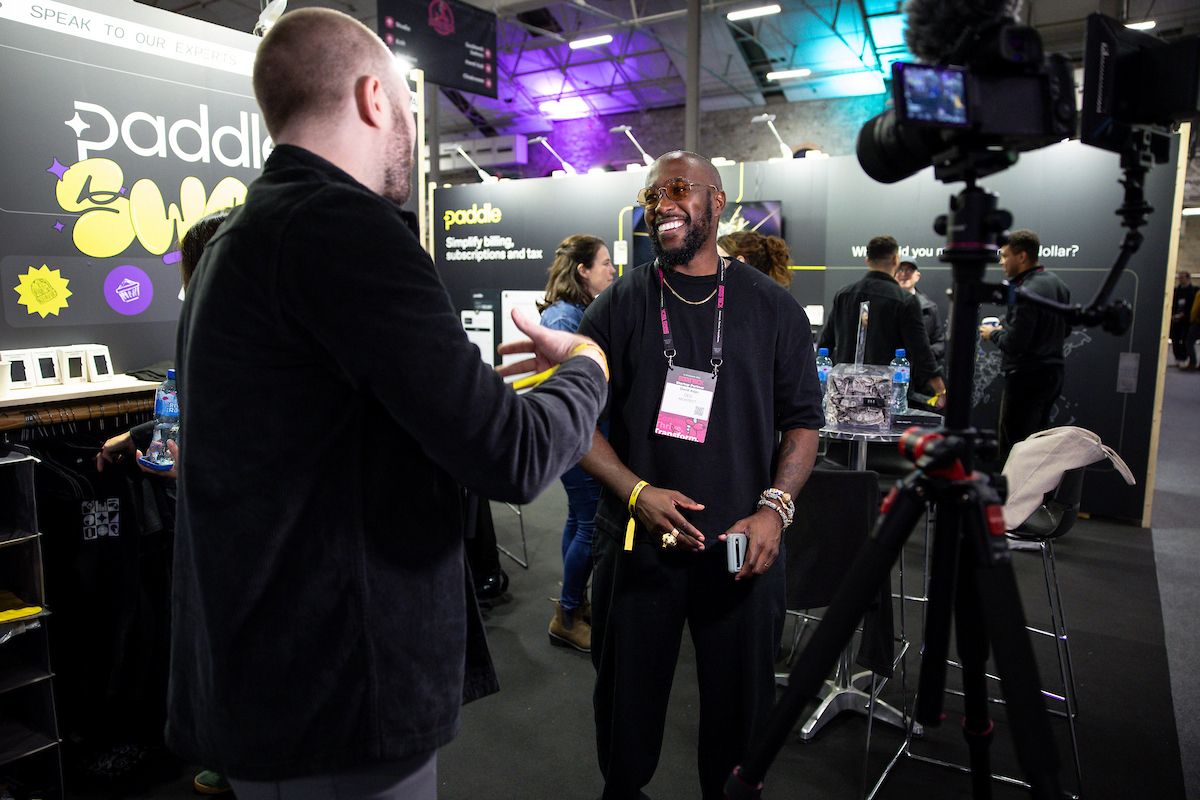
2. Brand awareness and thought leadership
77% of event attendees say they trust brands more after interacting face-to-face with them at events. Why? Because meeting in person creates a space for you to connect with prospects and customers on a level that’s hard to reach on Zoom.
Depending on the event, there’ll be a range of ways to increase your brand visibility onsite. Examples include: a booth and activations, fringe events, and your branding on event signage and collateral.
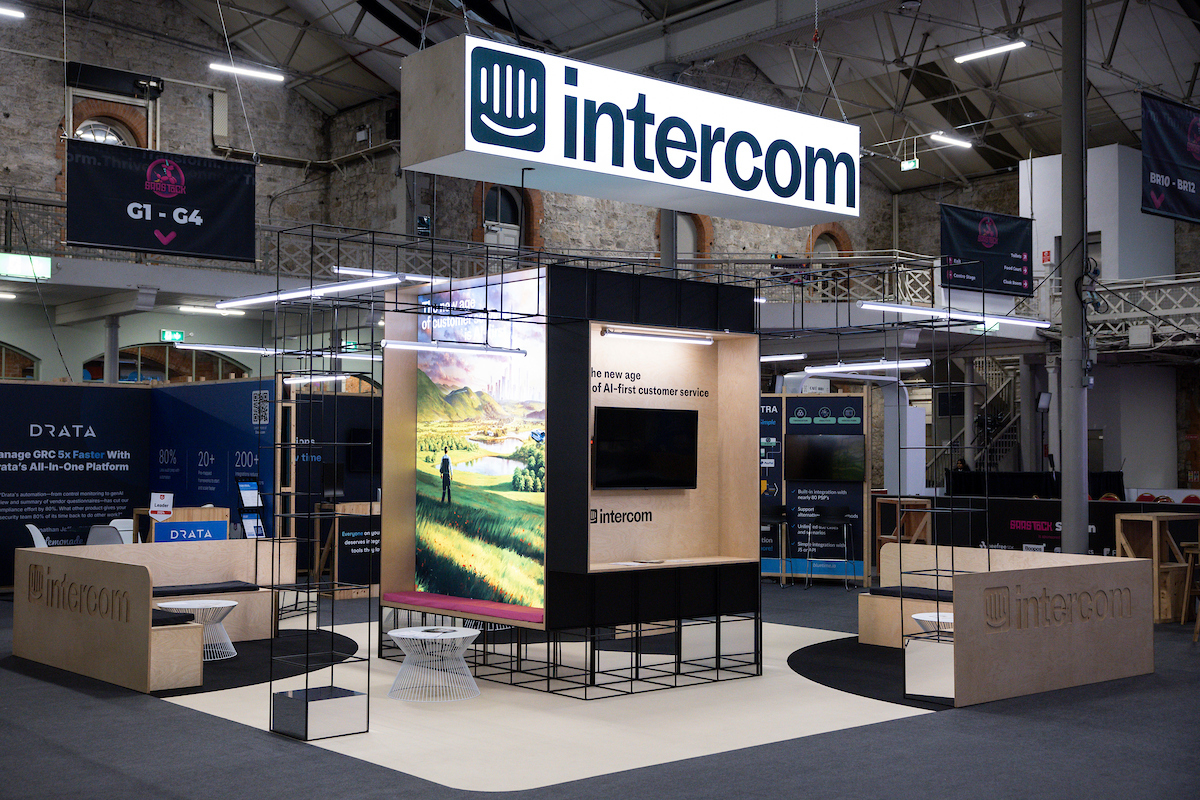
Many companies use content and collateral to share their value proposition unique market perspectives. This helps position their brands as a thought leader in the space. This can be through booth collateral, speaking opportunities, and hosted workshops or roundtables.
Think about your brand presence across the event–right down to how you want people to feel after they interact with your team. Prepare your team with this in mind so that they represent your brand both visually (with things like staff t-shirts)and socially through proactive networking. This way, they can make their own connections to increase reach and build that trust.
3. Customer relationships and feedback
As well as connecting with prospects, use events to meet with your existing customers. Speak with them and ask for feedback about what they value in your product and where they’d like to see improvement.
Listen to the feedback and take it back to your product team. Where you meet advocates, gather testimonials and case studies that you can use in your marketing collateral after the event.
Using events to connect with customers gives you the chance to have conversations that will impact your business KPIs:
- Listening to and addressing customer issues can prevent voluntary churn and increase LTV.
- Meeting advocates can help your team identify cross or upsell opportunities. You can move these opportunities into your pipeline and generate expansion revenue that increases NRR and lessens your reliance on acquiring new customers.
4. Networking and making new connections
Whether connecting with peers, finding new talent to join the business, meeting potential partners, or shaking hands with the lead investor of your next funding round—the power of networking shouldn’t be underestimated. 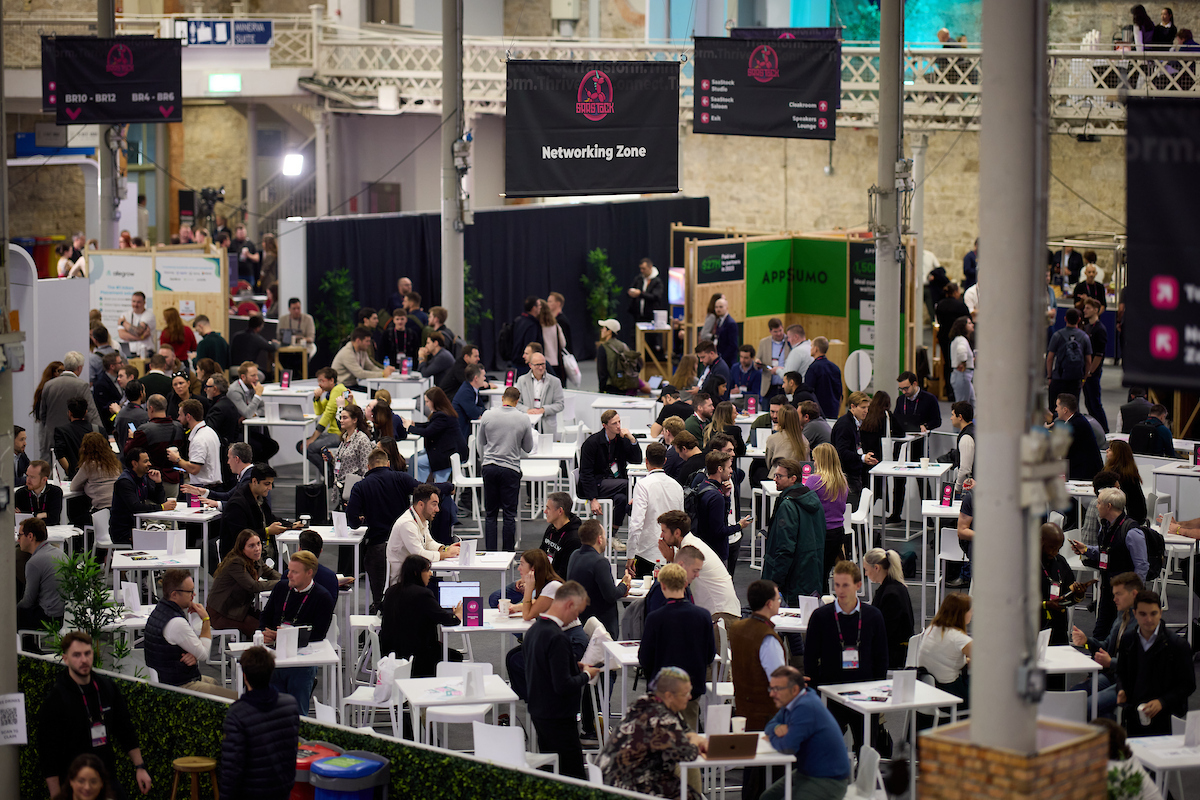
We know from our own events that networking is an increasingly important part of events for attendees and sponsors alike. As a result, it is becoming a more structured part of conferences and trade shows. At SaaStock, for example, we introduced a networking programme that runs alongside the event stage content and expo hall to make it easier for you to make the connections that will change your business’ trajectory.
Example: Userflow
We’ve seen the power of event networking in practice, with some big deals starting at our conferences.
In 2024, user onboarding software Userflow was acquired by customer communication platform Beamer, following an introduction at a SaaStock event. On the process, Co-Founder and Chief Growth Officer Esben Friis-Jensen said:
“The whole acquisition process started at SaaStock and it’s not the first time we’ve made those sorts of connections. At prior SaaStock’s I also met people that we ended up partnering closely with.”
5. Market intelligence
Events are an opportunity to get live feedback on your product and messaging–both from customers and people completely new to you. Use it to understand what’s valuable, what resonates, and what isn’t so clear. Collect the feedback, share it with your team, and use it to make decisions about where to focus going forward.
You can also use events to gather broader market intelligence. Walk the floor and speak to other exhibitors and attendees to get an understanding of what competitors are doing and see more broadly the challenges SaaS companies are facing, where they’re innovating, and what’s driving growth.
Example: Keylight
SaaS is a core segment for subscription platform, keylight, but it’s far from the only use case. On partnering with SaaStock, they set out to gain insights on the SaaS industry, the challenges it’s facing, and where they might be able to provide solutions with their product. They also viewed the event as a chance to learn more about other solutions in the space that might be able to help them grow.
“Many people are curious, so everyone’s very open to just have a chat without trying to sell a solution to each other. Because many people are SaaS companies, we’re always potentially interesting to each other…To almost every potential prospect I’m talking to, their solution might be interesting for us too. It’s always something mutual,” Marco Sarich, CEO and Founder, keylight
Measuring event marketing success
Amidst budget constraints, being able to prove the ROI of your marketing efforts is more important than ever. Depending on what you want to achieve with your event marketing, there are a number of ways to measure success. Here are some of the most common:
- Pipeline and revenue generation: Using metrics like leads generated, cost per lead, and event attributable revenue to understand how much money you made versus the cost of sponsorship.
- Brand awareness and engagement: Tracking your website visits and social following during and after the event. In the weeks and months that follow, review engagement with follow up marketing activity including emails, content marketing, and social posts.
- Customer engagement: Looking at the number of conversations you had against the number of cross or upsell opportunities and the amount of revenue generation from those opps.
We’ve got a more detailed guide to measuring the ROI of event sponsorship here.
Kick start your event marketing with SaaStock
At SaaStock, we’ve spent eight years working with SaaS companies of all sizes to make sure that our events drive impactful results against marketing and business goals.
Work closely with our team on a bespoke package that will help you build your pipeline, generate brand awareness, and make the connections that will help transform your business, including:
- Brand awareness across our events from a showfloor booth to fringe event sponsorship.
- Distinct networking experiences that guarantee impactful meetings with the right people.
- Tailored opportunities to engage with a focused audience including boardroom sessions for C-suite operators and workshop opportunities for your ICP.
- A VIP meeting service to pair you with your ideal customer, optimising your time at the event for maximum impact.
Get in touch to find out more about our partnership opportunities in the US and Europe.
